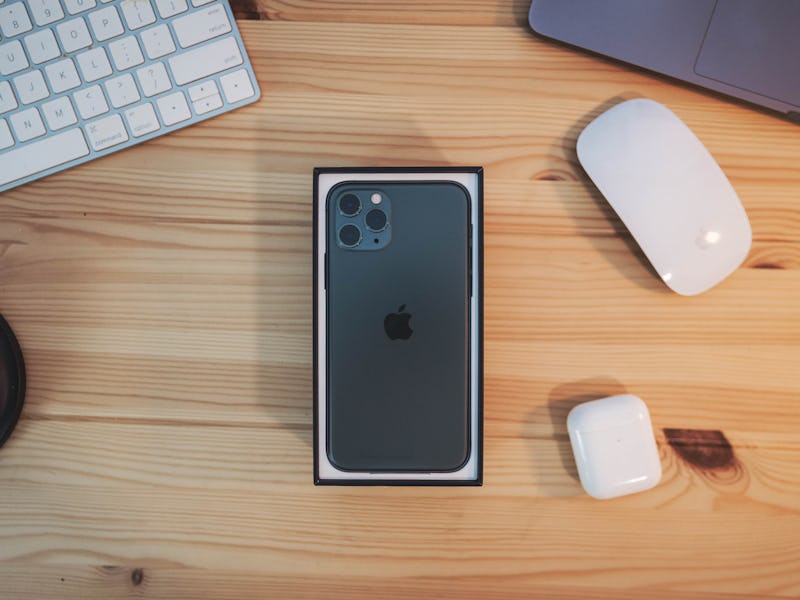iPhone 2020: Apple’s next smartphone may bring back a much-loved feature
It could be a year for big changes.

The next iPhone could feature a redesign that harkens back to the iPhone 4, a new report suggests. The report, published Wednesday, suggests Apple is hearing up to revive one of its most iconic and controversial designs.
Ming-Chi Kuo, an Apple analyst with an impressive track record, explained in a note obtained by MacRumors that the next iPhone launch will likely offer the redesign:
We predict that the new 2H20 iPhone design will change significantly […] The metal frame and the front and rear 2/2.5D glass are still used, but the metal frame surface will be changed to a similar design to the iPhone 4, replacing the current surface design.
The report comes less than one week after the launch of the iPhone 11.
The claim suggests Apple is about to embark on an upgrade on par with the iPhone 6 in 2014 and the iPhone X in 2017, as part of a newly-emerging three-year cycle between redesigns. As consumers hold onto phones for longer and the upgrade cycle increases in length, Apple has quietly shifted the strategy behind its biggest product to reflect the market.
For its next move, it seems Apple will revive a classic design loved by former CEO Steve Jobs.
The iPhone 4.
iPhone 2020: How the iPhone 4 could see a revival
When it launched in 2010, the iPhone 4 was a breakthrough. It ditched the plastic casing in favor of a flat stainless steel band, curved at the corners, with glass on both sides. It had a silent switch with a satisfying click, two circular volume buttons, and cutouts at strategic points to support the antenna.
The device also brought a number of firsts to the iPhone. It was the first to offer a front-facing camera, the first to shoot high-definition video, the first with a flash, and the first with a high-resolution display designed so the human eye could not spot individual pixels.
The iPhone 4’s design was praised by Jobs, who described it during the June 2010 unveiling as “like a beautiful old Leica camera.” Jobs made design a key value for Apple during his time as CEO, working with Jony Ive on iconic classics like the iMac, iPod, and iPad.
A Leica camera.
Unfortunately, the iPhone 4’s design was not without its quirks. Users found that placing their finger on the bottom left of the steel band caused the phone to lose signal, an issue dubbed “antennagate.”
Moving back to an iPhone 4-like design would likely mean ditching the curved design present since the iPhone 6, a feature that allows the user to roll the phone in their hand and touch all sides of the increasingly-bigger screens. It could also mean, however, moving to a design closer to that of last year’s iPad Pro, which also bore similarity to the iPhone 4.
The new iPad Pro features flat edges.
iPhone 2020: How Apple plans to redesign its smartphone
Kuo claims the company could use a metal frame with “a more complex segmentation design, new trenching and injection molding procedures, and sapphire or glass cover assembly to protect the trench injection molding structure.” The design changes could cause the price of the metal frame and glass casing to rise 50 to 60 percent and 40 to 50 percent respectively.
Beyond a new design, Kuo’s previous reports signal much bigger changes to the lineup. The three-size lineup will drop the current structure, with a low-end 6.1-inch LCD iPhone 11 alongside a 5.8-inch OLED iPhone 11 Pro and 6.5-inch OLED iPhone 11 Pro Max. All three phones would instead use OLED screens, with sizes instead coming in at 5.4-inch, 6.1-inch and 6.7-inch. The two more expensive models may use a time-of-flight distance sensor on the back to improve augmented reality and camera performance.
The new version is also expected to offer 5G connectivity, notably missing from this year’s model. But although Apple has now purchased Intel’s modem business, next year’s devices are expected to use Qualcomm modems.
Users waiting for iPhones packed with Apple’s in-house modem will have to wait a bit longer — Kuo expects the modem to debut on the 2022 iPhone.